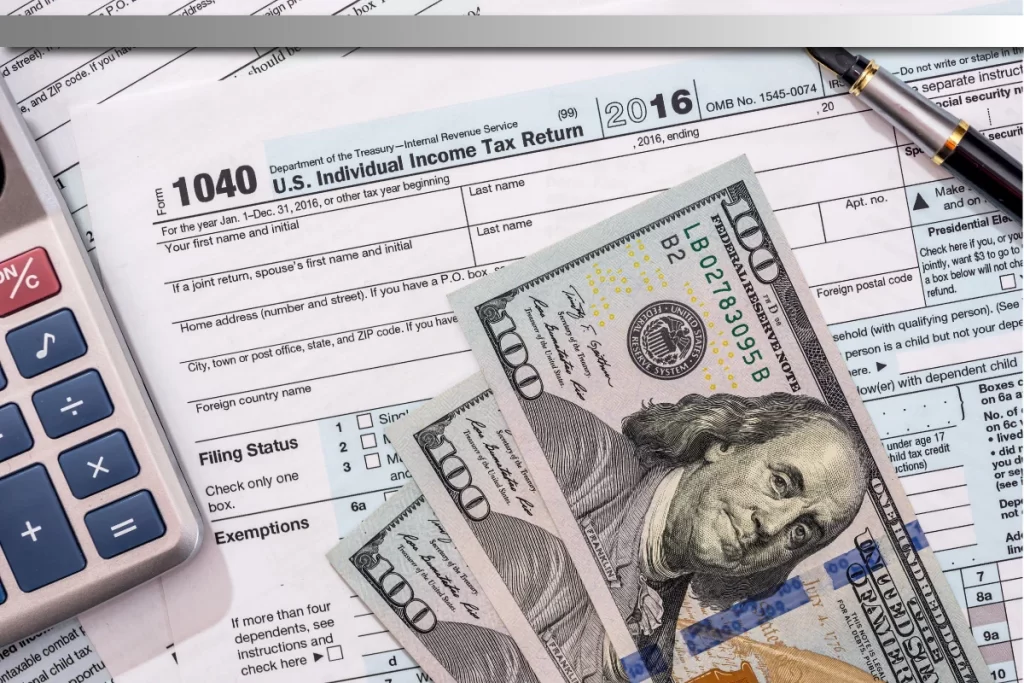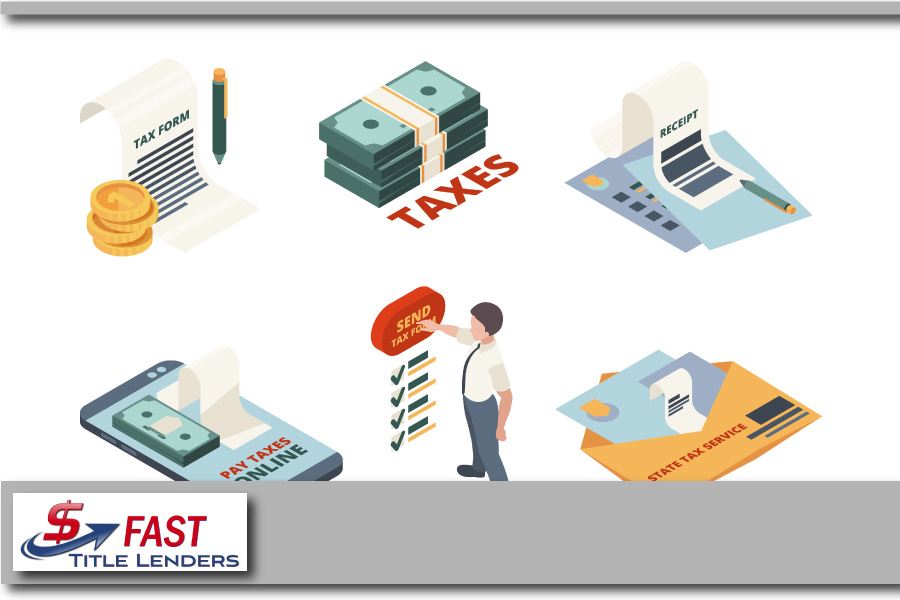It’s tax time again and a frequent question during this time is ‘can you get a title loan with a tax refund’? If you know you have a tax refund coming, and have an immediate need for the funds, then a title loan may be a way to get the funds you need now.

How would a Tax Refund be used to get a Title Loan?
It may not always be intuitive to think of using a tax refund to repay a title loan. Let’s look at the main requirements to get a car title loan:
- Vehicle with equity
- Lien free title
- Proof of Insurance
- Proof of Income
The requirement for proof of income is where the tax refund comes in. In most cases this requirement is met by providing pay statements from a job, however any income can be used to meet this requirement. This includes income in the form of a tax refund.
Now that we know you can get a title loan and use a tax refund, now let’s look at how.
How to get a Title Loan using a Future Tax Refund
There is one extra preparation step to be able to get a title loan with a tax refund that cannot be overlooked. This step is completing your taxes and filing your 1040 Form. If you have a refund due after filing you can use this as proof of income for a title loan.
Once you’ve completed your taxes you will want to prepare for the title loan just like any other time. We’ve detailed how to prepare for a title loan in other posts, so we’ll touch on the high level steps here:
- Value your vehicle
- Determine the Loan Amount
- Optimize the loan (use the title loan calculator)
- Apply Online
From there the title loan company will help complete the remaining steps until your loan is funded. This can be by direct deposit if chosen or other methods.
Choosing the Loan Amount
A title loan amount is limited to a maximum of 50% of the vehicle value. Generally you determine the loan amount by how much you need and how much you can afford to repay.
In the case of using a tax refund to repay the loan, you don’t want to borrow the maximum unless it is less than the amount of your expected refund. To better illustrate this, we’ll look at a few examples of a $2500 refund in the following table:
| Vehicle Value | Max Loan Amount | Refund Amount | Loan Cost |
|---|---|---|---|
| $10,000 | $5,000 | $2,500 | $2,500 |
| $8,000 | $4,000 | $2,500 | $2,500 |
| $5,000 | $2,500 | $2,500 | $2,500 |
| $2,000 | $1,000 | $2,500 | $1,000 |
You’ll notice that with a vehicle that is worth less than the refund amount, the maximum amount you can borrow will be less than the refund amount.
An important distinction to make here is the Loan cost is not equal to the amount borrowed. Also, the shorter the loan is the cheaper the interest costs. So making sure you file your return before getting the title loan is important. You’ll also want to have a back-up plan in case a mistake was made on the return.
Summary
A tax refund is simply a form of income. If you need access to this income immediately, then a title loan may be a solution that allows you to get the funds needed. Just make sure to evaluate the cost versus benefit of using a title loan to borrow with the plan of repaying with your tax refund.
